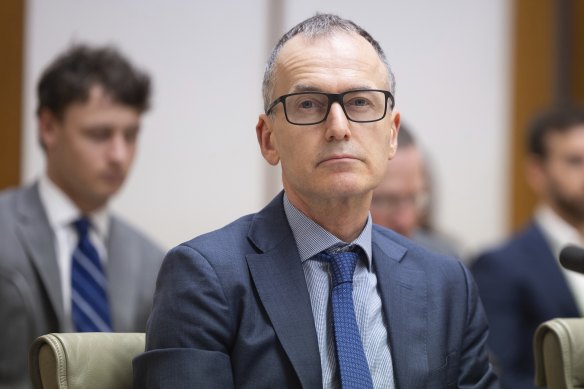
The biggest winners from one of the Reserve Bank’s largest stimulus measures during COVID ended up being people with fixed interest rates.
A review of the bank’s $188 billion term funding facility (TFF), released today, shows the program helped the nation’s commercial banks dramatically reduce fixed-term mortgage rates, far more than for people on variable rates or for businesses, which were the stated aims of the program.
Apart from taking official interest rates to a record low of 0.1 per cent, the bank undertook a range of measures – collectively termed quantitative easing – to help the economy through the COVID-related shutdowns.
These included the program under which the RBA loaned $188 billion to the commercial banks at 0.1 per cent, with extra cheap cash available if the banks in turn loaned out the money to small businesses.
RBA assistant governor Christopher Kent this morning released a report into the program that found it had played a critical role in protecting the economy.

RBA assistant governor Christopher Kent.Credit: Alex Ellinghausen
“It helped prevent dire economic outcomes at a time when the outlook was bleak and highly uncertain, and there was limited scope for further cuts to the cash rate,” he said.
“The TFF contributed to materially lower lending rates for households and businesses by reducing funding costs directly for banks, and indirectly for other institutions that borrow from wholesale funding markets.”
The review, however, found benefits flowed differently to certain borrowers.
Through 2020, the RBA cut the official cash rate by 0.65 percentage points.
But with assistance from the TFF, interest rates on fixed mortgages fell by 1.52 percentage points compared with an average drop of 0.68 percentage points on variable mortgages.
Loading
Overall business lending rates fell by 1.05 percentage points.
The big fall in fixed rates led to a surge in the number of people on fixed mortgages. Before COVID, about 15 per cent of mortgages were on fixed rates. This climbed to 45 per cent by mid-2021.
“Not only were existing borrowers switching from variable to fixed rates, but new mortgage lending also picked up noticeably through 2020 and into 2021,” Kent said.
The review also found despite the program’s stated aim, there was no “statistically significant effect” on total lending to small businesses compared with large businesses.
The program has also come at a $9 billion cost to the RBA.









 Add Category
Add Category